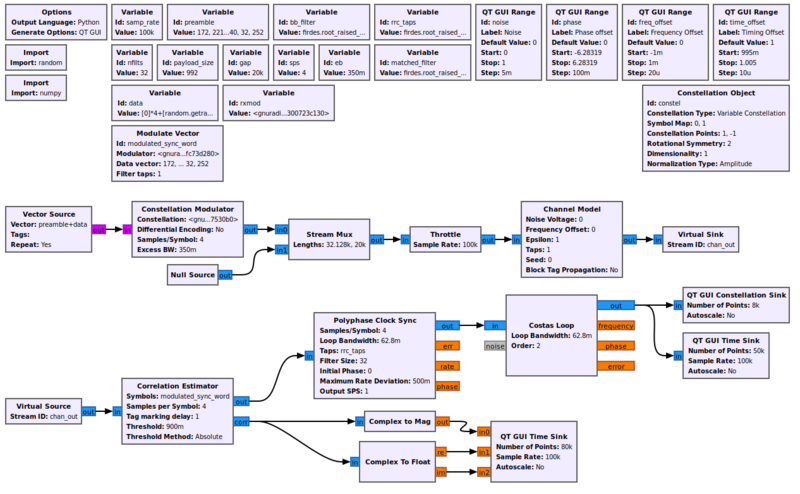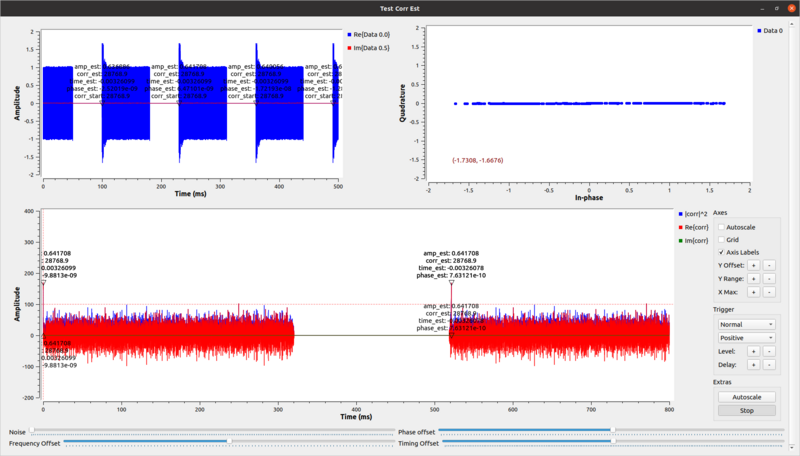Correlation Estimator: Difference between revisions
Jump to navigation
Jump to search
No edit summary |
|||
| Line 1: | Line 1: | ||
[[Category:Block Docs]] | [[Category:Block Docs]] | ||
Correlates the input signal against the provided vector of samples and outputs a phase and symbol timing estimate. | Correlates the input signal against the provided vector of samples and outputs a phase and symbol timing estimate. | ||
It adds the tags of "corr_start", "phase_est", "time_est", "corr_est", and "amp_est". | |||
== Parameters == | == Parameters == | ||
Revision as of 11:54, 31 January 2022
Correlates the input signal against the provided vector of samples and outputs a phase and symbol timing estimate.
It adds the tags of "corr_start", "phase_est", "time_est", "corr_est", and "amp_est".
Parameters
(R): Run-time adjustable
- Symbols
- Set of symbols to correlate against (e.g., a sync word).
- Samples per Symbol
- Samples per symbol
- Tag Marking Delay (R)
- Tag marking delay in samples after the corr_start tag
- Threshold (R)
- Threshold of correlator: The meaning of this parameter depends on the threshold method used. For DYNAMIC threshold method, this parameter is actually 1 - Probability of False Alarm (under some inaccurate assumptions). The code performs the check |r[k]|^2 + |r[k+1]|^2 <> -log(1-threshold)*2*E, where r[k] is the correlated incoming signal, and E is the average sample energy of the correlated signal. For ABSOLUTE threshold method, this parameter sets the threshold to a fraction of the maximum squared autocorrelation. The code performs the check |r[k]|^2 <> threshold * R^2, where R is the precomputed max autocorrelation of the given sync word. Default is 0.9.
- Threshold Method
- Method for computing threshold. Options: [Absolute, Dynamic]
Example Flowgraph
This flowgraph is extracted from [1]
Example Output
Source Files
- C++ files
- corr_est_cc_impl.cc
- Header files
- corr_est_cc_impl.h
- Public header files
- corr_est_cc.h
- Block definition
- digital_corr_est_cc.block.yml

